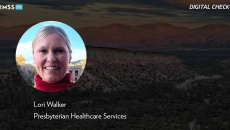Patient Access
As European healthcare data regulations evolve, Alexander Berler, IHE Catalyst's strategic business development director, says adopting its integration profiles can help vendors ensure their tools meet interoperability standards.
Nursing and IT
Cheryl Dalton-Norman, RN, says this virtual care approach can boost access and increase patient satisfaction, while achieving economies of scale and alleviating physician burnout.
With the upgraded telehealth and digital care platform, Rush University's health system says it aims to bring more patients convenient, around-the-clock access to quality care, regardless of geographic location.
According to OECD AI in Healthcare Expert Group member Dr Derya Şahin, 2.6 billion people worldwide still lack internet access, meaning basic connectivity is needed in those areas before digital health projects can begin.
In buying the real-time monitoring and patient engagement platform to unify disparate sources of health information, Samsung Electronics says data flowing from wearables could help improve clinical insights and prevent patient care delays.
Data from this past year showed that 65% of individuals accessed patient information online at least once in the past year, up from 57% in 2022. Those managing chronic conditions or recent cancer diagnoses are even more engaged, says ASTP/ONC.
Real-time decision support demands an IT network that can handle the volume and velocity of clinical data, while maintaining trust and reliability so clinicians can act on AI recommendations.
Lori Walker, Presbyterian Healthcare Services' CMIO, says artificial intelligence that summarizes rural patients' multiple health challenges and social determinants for consumption during 30-minute patient visits is reducing cognitive burdens.
Makati City has invested over $60 million to launch an integrated 24/7 digital healthcare system.
Also, Te Whatu Ora Health New Zealand has started implementing a new mobile emergency response module.








